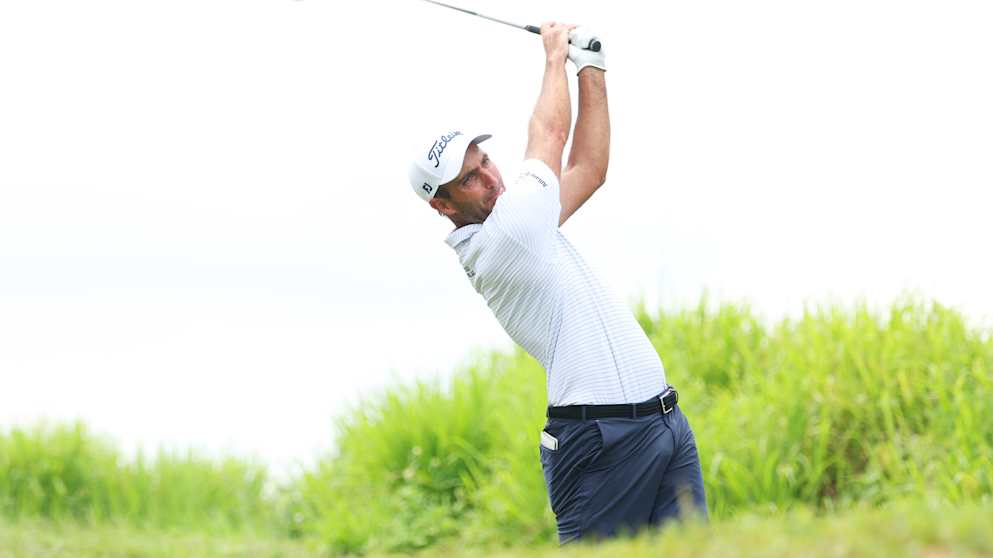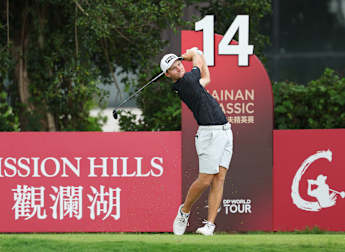It may have been a delayed start to the season for Edoardo Molinari but when the DP World Tour heads to Türkiye next week, he will be one of the in-form players.

After losing his card briefly at the end of last season, the experienced Italian promptly regained it by winning the Final Stage of Qualifying School despite playing through the pain barrier amid a lingering wrist injury.
But his hopes of building on that momentum were halted by surgery, resulting in a four-month absence from the DP World Tour.
However, after a gradual return to competitive action – initially on the lower-level Nordic Golf League – he enjoyed a strong run of results over the Asian Swing.
In his mid-40s, the Italian is spinning a few plates both on and off the course, enjoying success with his statistics business that has seen him work with many of the world’s leading players and also combining his playing opportunities with planning for a second stint as a Ryder Cup Vice Captain later this year.
Ahead of the start of the European Swing commencing with the Turkish Airlines Open, we caught up with the three-time DP World Tour winner…
Many people may be wondering why your season only started in March at the Porsche Singapore Classic. What was the reason?
I had an issue with my right wrist. It started to bother me in June last year at the U.S. Open. I had a couple of treatments that seemed to make it better, but then eventually by October I was struggling to play. I managed to get through the Final Stage of Qualifying School through painkillers, ice etc. After winning Qualifying School, I had surgery on December 13 and then I had to wait three-and-a-half to four months before being able to tee it up again on the DP World Tour.
Was your plan always to undergo surgery after Qualifying School finished?
No, when I finished Qualifying School, I was hoping to go and play in the double-header in Australia straight away. I came back home, tried to rest my hand for a couple of days and then went out to practise and all I could hit was 50-yard pitch shots. Obviously, from that moment I knew I couldn’t play. I went to see a surgeon who also performed surgery on me ten years ago.
Qualifying School is often considered as one of the toughest tests in golf. How did you find the challenge of battling to regain your card, just a couple of weeks after a draining campaign?
I had done Qualifying School a couple of times before – in 2015 and 2016 - and been successful before, albeit not done as good as this time, but still managed to get my card. I have a bit more experience than most of the guys that were at the last Qualifying School. The key is to be very patient at Qualifying School. Sometimes you can be pressurised by this belief that you need to shoot 20 under. But over six rounds, 20 under is not that much. Shoot three or four under every day and you are cruising.
So, having made the cut in each of your four starts since and secured two top tens, you must be pleased with how you’ve played over the Asian Swing?
I didn’t play pretty much from my final round at Qualifying School through to the Porsche Singapore Classic. Well, I played two Nordic Golf League events at the end of February which were very helpful to test the hand for the first time but up until then I hadn’t played more than nine holes twice. I played decent there, almost won the first event and had a chance to win the second event. Obviously, Singapore is a much higher level, I had a bad first round, but I felt like my game was in decent shape. I had a good second and third round and from then on I had some really good scores. Even with the first week in China when I finished in a tie for 36th, I was in the top ten after two days and then just had a bad weekend. But I have definitely exceeded my expectations. It is never easy to come back after a four-month injury absence and to not only make the cuts but to be in contention a couple of times and having fun on the course was great.
Have your targets changed at all because of your performances in recent weeks?
No, I always knew what I could achieve. Last year, I had a bad season. I just wasn’t putting well, wasn’t playing particularly well but I knew exactly what I needed to work on. I have never been one to set goals. I try to do the best I can in every event, on every hole, and see where that gets me. But it has been very encouraging to be in contention almost every week. I have played some really solid golf and I am really keen to keep it going in Türkiye and over the coming weeks.
After losing your card after the Genesis Championship in South Korea, you spoke of how you were looking forward to some time with your wife and children. Amid the frustration of being unable to play, how beneficial was it to have the time away from the international week-to-week travel and spend time with family?
Absolutely. The upside to having an injury or surgery is that finally you can spend some quality time at home with the kids, your wife, friends and family. When you are on the road, they can get neglected, but it is the nature of this job. All of a sudden, I was able to spend four months with them, seeing them every day, bringing the kids to school along with just doing the other normal day-to-day stuff with my wife. It was very refreshing and put things into perspective.
You’ve been a professional for almost 20 years and are known for having a key analytical mind. Where do you think the standard of golf is today compared to when you first set out in the paid ranks?
There is definitely more depth now than there used to be 20 years ago. I would say the top players now are not that much better than the top players 20 years ago. Whether it be finishing top 50 on the Race to Dubai Rankings to play in the DP World Tour Championship or to keep your card, that level has definitely improved. Every week when we tee it up, when there is a full field, out of 156 players there are probably 120 that can win, while I would say 20 years ago that wasn’t the case. It was the same 15-20 guys who were able to play to win. The others were fighting to finish in the top 10 or 20. But now, the difference between the top guys and the average across the board is much much tighter.
You’re regarded as one of the leading data analysts for players on tour. But how has it helped you as a golfer?
It has helped me in a variety of ways. For one, it takes my mind away from the feeling of being alone when at tournaments after a bad day when you’d typically start dwelling about certain shots, the mistakes and what could have gone better. I am obviously busier now with statistics business. In my down time now, sometimes I spend an hour at the computer looking at the data of other players or answering their questions. It is another way to keep my brain occupied, and not just think about my own golf. The other thing that has been extremely helpful is I have been able to discuss the game and play practice rounds with players that five years ago I would say ‘hi’ to but nothing more. Now, all of a sudden, when they come to Europe it is different. Like last year when I qualified for the U.S. Open, players were asking to play a practice round with me. I would never have thought it possible that in my lifetime a top-five player would ask me to play in a practice round with me at a Major because he thought it was helpful for him. I get to have many more conversations with those kind of players and that helps my game because I get to pick up some ideas, ask a question yourself and you see how they prepare and practise which in the long term can only be good for my game.










